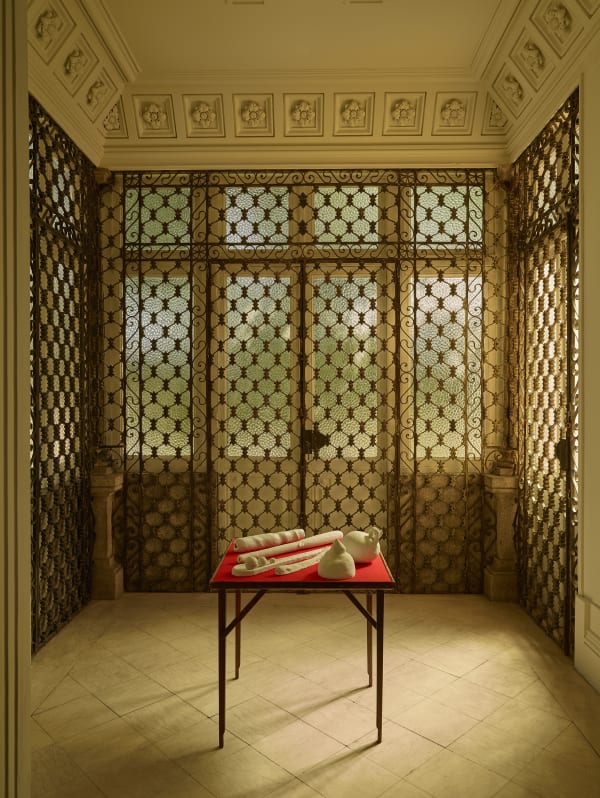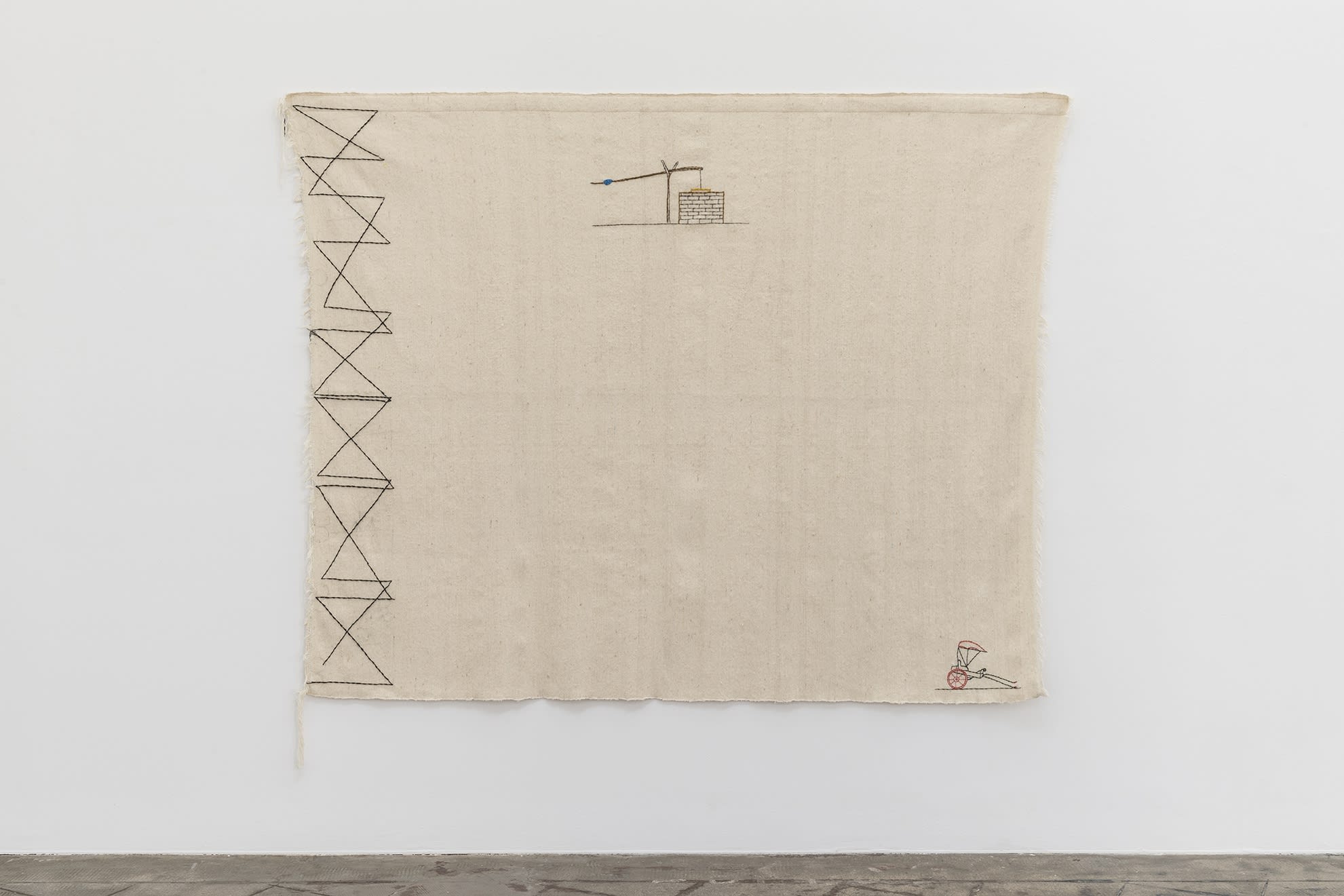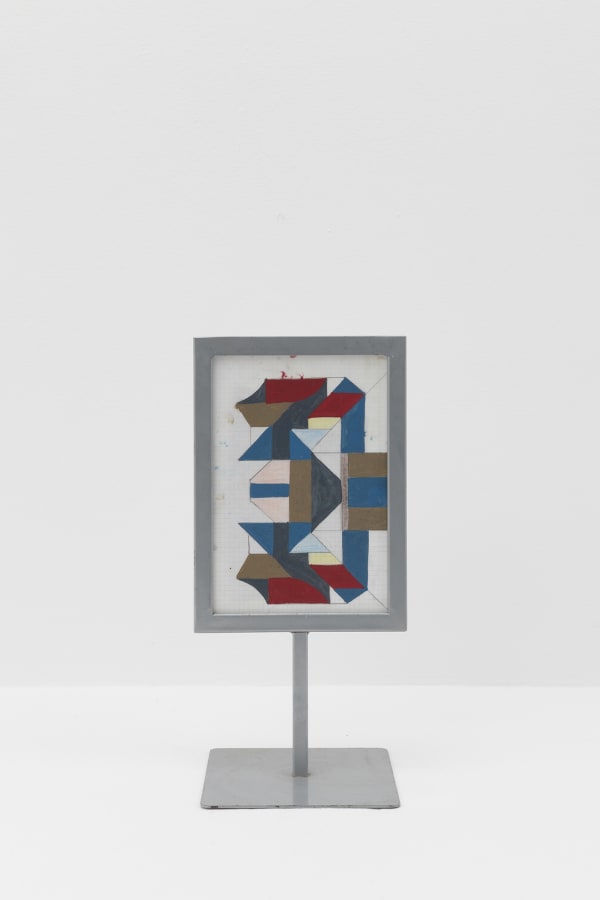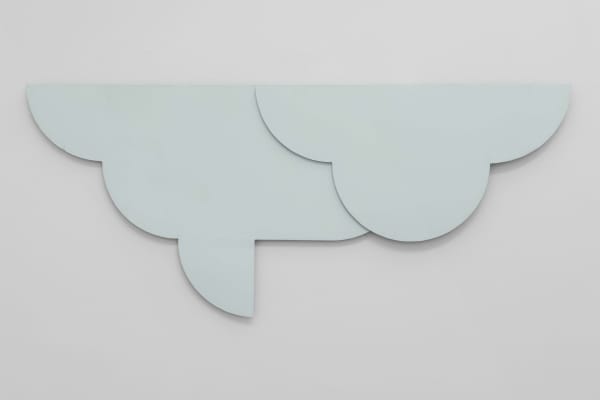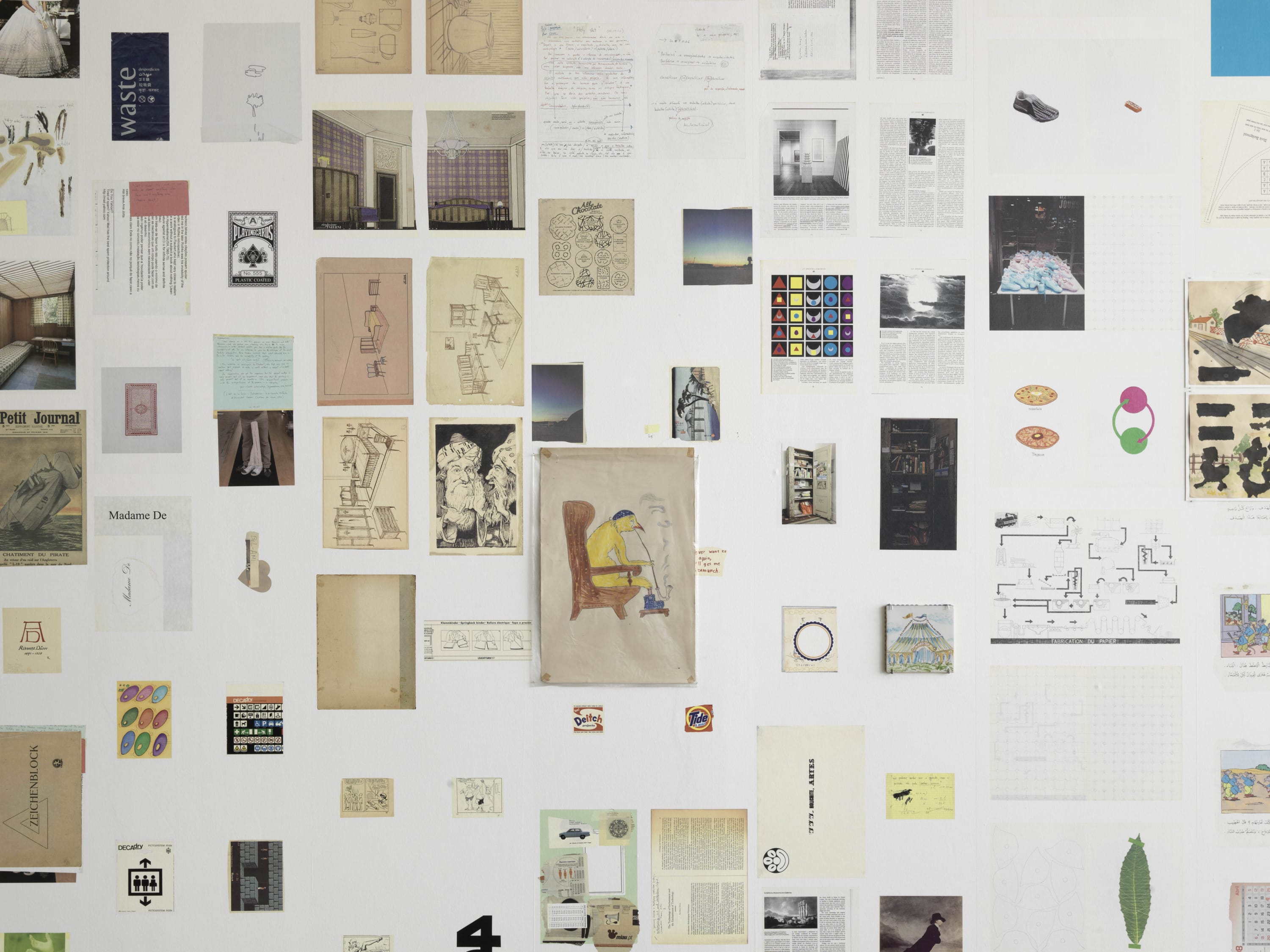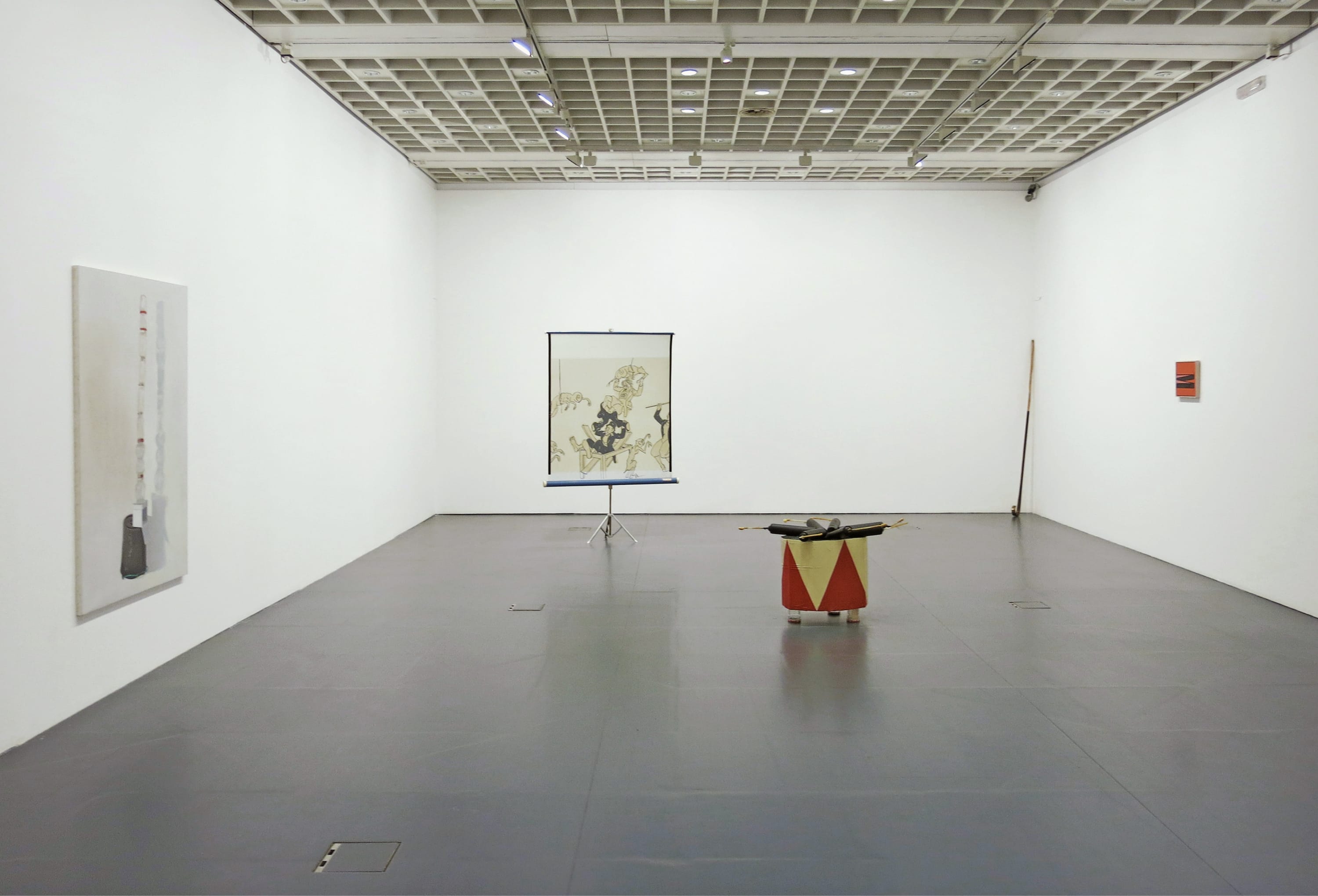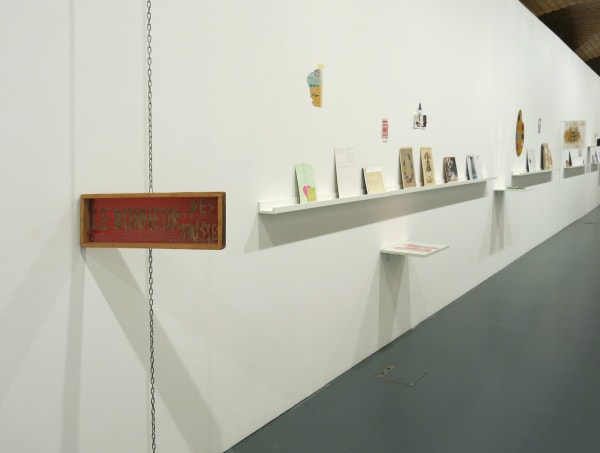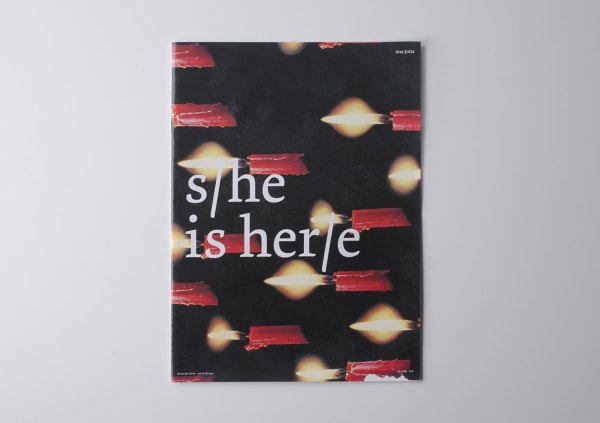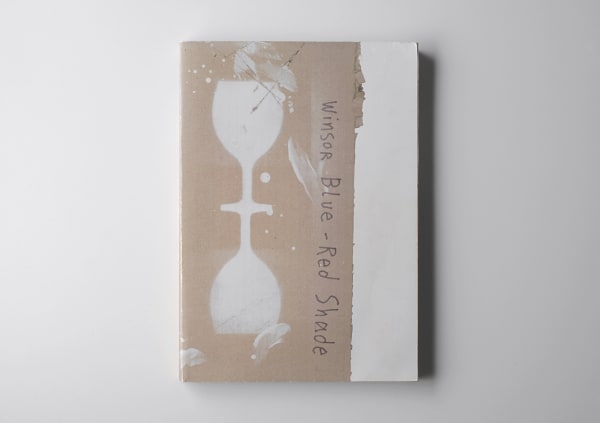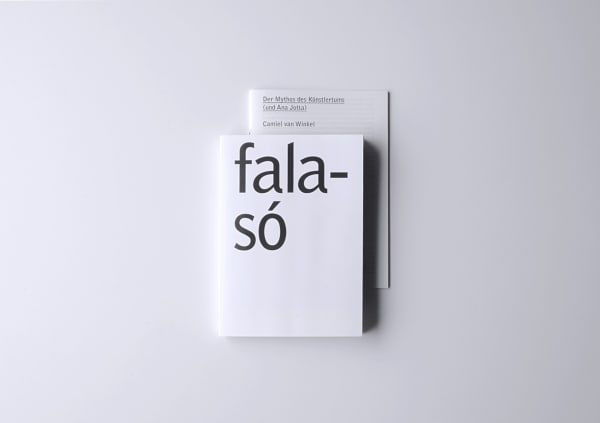-
ANA JOTTA, QUE SAIS-JE?, 2011 -
Throughout the last five decades, Ana Jotta has been building a singular body of work which has granted her an increasingly international attention. Paradoxically, part of that singularity comes from her complete disregard for some of the most widespread “rules” of artistic practice. Ana Jotta has no intent on establishing a coherent, recognizable style, nor does her work circumscribe itself to one single media. In fact, she has paid as much attention to painting as she has done to drawing, collage, assemblage or sculpture. Engraving, embroidery, sewing have also played an important part in her work. However diverse and equally important, none of these activities has had so much attention from the artist as that which focuses on what we usually call the “found object”. As the name states, these are objects –things of the most diverse nature–, which the artist comes across in her day-to-day life and whose qualities –formal, symbolic, conceptual or other– somehow capture her interest in a special way.
As João Fernandes wrote in The House of Ana (2005): “There is a playful principle that Ana Jotta uses in order to destabilise any type of frontier or limit between art and life. «If it is possible to appropriate everything as art, then we should do so». Freed of grandiloquent manifestos or attitudes, but rather through the subversion of small daily gestures, Jotta’s work is a constant irreverence towards certainties and routines.”
-
In the work of Ana Jotta, the animal figure is a constant reference. Besides making allusions to cartoon characters, outsider art or childbook illustrations, and generally to cultural fields considered minor ones, these animal characters refer to fables, from Ovid’s Metamorphoses in the Antiquity to the fairytales of Jacob and Wilhelm Grimm, where anthropomorphism and animality mingle into fantastic figures. Ana Jotta’s paintings, such as her elegant portrait of Mademoiselle Rivière after Ingres, who shows the face of a cute mouse, is both irreverent and enlightening. It speaks of our relationship to the processes of identification and empathy, and confronts the self-evidency of so-called classical culture, turning it into Kitsch.
(Extracted from a text of François Piron for his exhibition THREE MORAL TALES featuring Ana Jotta, Joëlle de La Casinière, Anne-Mie Van Kerckhoven, held at the Malmö Konsthall (15/06/19 - 25/08/19).
-
"Inventória" - Casa São Roque, Porto (2019)
-
 ANA JOTTA, WALLDRAWING, 2019
ANA JOTTA, WALLDRAWING, 2019 -
Through a discreet display of works from the Peter Meeker (Pedro Álvares Ribeiro) collection and sitespecific interventions, Jotta pays a visit to the old house Casa São Roque left abandoned for many years and now restored by its new tenants and transformed into a new contemporary art centre.
Some of Jotta's interventions at the house are wall or floor drawings of scenes from the Krazy Kat comic book series. The exhibition also comprises an array of home-made objects and handicraft pieces created by Jotta, including embroidery, lamps and pottery. The fist (The Father) and cross (The Mother) replace the former family portraits customarily found in this type of bourgeois mansion. -
"THREE MORAL TALES", MALMÖ KONSTHALL (2019)
-
 ANA JOTTA, ANA E EU, 2018.
ANA JOTTA, ANA E EU, 2018. -
In 2019 French curator François Piron invited Ana Jotta to be part of the exhibition Three Moral Tales, together with artists Joëlle de la Casinière and Anne-Mie Van Kerckhoven. The three artists have in common to pay no fealty to trends of contemporary art. They stood aside, went underground or remained indifferent to the twists and turns of the art world. In a way, paradoxically, being marginalized encouraged a calculated versatility of media and styles, and the invention of an idiosyncratic vocabulary, while total freedom remained their one and only rule. Among the works shown by Ana Jotta there was Ana e eu (2018) and Life, Work, References (2016).
-
 ANA JOTTA, LIFE, WORK, REFERENCES, 2016
ANA JOTTA, LIFE, WORK, REFERENCES, 2016 -
"UNTITLED" - PROJECTESD, BARCELONA (2019)
-
 ANA JOTTA, O POÇO, 2019
ANA JOTTA, O POÇO, 2019 -
Jotta’s first embroidered cloth appears in 1993. lt is, after all, a drawing: instead of the pencil line, needle and thread: instead of paper, cloth. Among the characteristics displayed in these works is the efficacy of the simplitcity of the drawing, which is often geometrical; the suIting of the embroidery to the type and format of the cloth (which might be new or old, with or without a pattern): the positioning of the motif on the support: the attention granted to apparently lesser issues such as the finishing off of the cloth (simple, trimmed or without any finishing). O poço (The well) is a recent example of this. A large blanket on which Jotta draws a few of motifs embroidered on the handmade textile, a geometric band all along the left side, a well as central motif and a rickshaw on the right bottom corner of the blanket.
Often words and sentences are the motifs embroidered, as in the red cloth Portuguese Handicraft (1992), or printed on the fabric as in Que sais-je? (2011). Here he text “What do I know”? imprinted on an old pillow case works as a statement on a hanging flag, a reference to French philosopher Montaigne's famous motto and an elocuent commentary to the transmission of knowledge.
Os Plastificados (the Plastified) is a set of works on paper presented in display stands. This is an open series in Jotta’s body of work. Conceived by the artist as a visual equivalent of footnotes or quotes in a visual diary of sorts, they trace, sketch, record, and play with words, signs, colors and ideas.
-
 ANA JOTTA, PORTUGUESE HANDICRAFT, 1992
ANA JOTTA, PORTUGUESE HANDICRAFT, 1992 -
"ANA JOTTA: DAS IST DAS?" - TEMPORARY GALLERY, COLOGNE (2018)
-
 ANA JOTTA, FALA-SÒ, 2017
ANA JOTTA, FALA-SÒ, 2017 -
The fabric work "fala-só" (an outdated Portuguese expression for ‘soliloquy’) was made between 2014 and 2017. Over 40-metres in length, the panel offers a step-by-step insight into the artist’s exceptionally multi-layered and polymorphic oeuvre. Along the blue fabric she depicts the sketchy outline of a worker carrying a pane of glass under his arm. The repetition of the motif as a sequence of movements might evoke the association of a magnified filmstrip.
-
"BEFORE I FORGET" - PROJECTESD, BARCELONA (2016)
-
The first Ana Jotta’s exhibition in ProjecteSD was in 2016 entitled Abans que me n'oblidi (Before I forget). The show was conceived as a small retropective on her work since the 80’s. Ana Jotta has paid as much attention to painting as she has done to sculpture, she has delved into drawing and experimented with etching, and knitting has sometimes graced her studio as well. However diverse and equally important, none of these activities has had so much attention from the artist as that which focuses on what it is usually called the “found object”. In Jotta’s universe these form a collectivity of sorts, a growing body made of different parts, some of which stand exactly as they came about, others having underwent a process of transcription into another medium, and others still getting combined, slightly altered, moderately edited, but rarely drastically transformed. And so, in the exhibition we find clouds, miniature bikinis made of leather, phantom playing card paintings, labeling plates, painted screens, newspaper cuts, parts of old signs, flags, trays, calendars, or packs of fluorescent books: a perfectly sound image of a fragmented universe, moderately serious, purposely ironic, but ever so invested in testing and showing the capacity that the slightest things have to trigger our artistic experience.
-
Photos: Roberto Ruiz
-
In 1981 Jotta competed in the second edition of the drawing biennale in Lisbon with three pieces created by a heteronym she had invented, Al Cartio. He was born in Honolulu, Hawaii, in 1951, and studied Art History at the Nova Scotia College of Art and Design, in Halifax, Canada. The following two works are by Al Cartio.
Much later in 2018, Ana Jotta and Ricardo Valentim co-curated the exhibition Al Cartio and Constance Ruth Howes from A to C for the Calouste Gulbenkian Museum where a selection of works by the two artists (their corresponding heteronyms) were in dialogue.
-
"CASSANDRA" (2016)
-
 ANA JOTTA, CASSANDRA, 2016
ANA JOTTA, CASSANDRA, 2016Installation view: TI RE LI RE, Le Crédac, Ivry-Sur-Seine, 2016. © André Morin / le Crédac.
-
In 2014, Culturgest Lisboa presented an exhibition of Ana Jotta entitled The Conclusion of the Precedent, which focused on the work she had produced since her retrospective at the Serralves Museum, in Porto, in 2005. Lying at the core of this exhibition was what the artist calls "footnotes", a paraphernalia of objects and printed matter that she has gathered together over the years and which, in different ways, but always with a generative role, play an important part in her creative process. The book published within the context of that exhibition, which brought together much of that printed matter has been transfigured into another work Cassandra, a visual and semantically saturated wallpaper that may hold other pieces produced by the artist.
-
"A CONCLUSÃO DA PRECEDENTE" - CULTURGEST, LISBON (2014)
-
 ANA JOTTA A GLORIOSA, 2006
ANA JOTTA A GLORIOSA, 2006 -

-
The radically polymorphic work of Ana Jotta shuns any kind of chronological linearity, constantly disrupting the possibility of being conveniently classified into phases or periods. The Conclusion of the Precedent, exhibition held at Culturgest Lisbon in 2014 and curated by Miguel Wandschneider, was an anthology of her work since the retrospective exhibition held at the Museu de Serralves, Porto, in 2005. However, the approach adopted was a decidedly fragmentary and unsystematic one, rejecting any reconstitution of the successive groups or series of works through which her artistic practice had materialised until then. At its core lied what the artist describes as “footnotes”: a paraphernalia of objects and printed matter that she has gathered together at her home or in her studio, and which, in different ways, but always with a generative role, play an important part in her creative process.
Text by Miguel Wandschneider in press release
-
SOME BOOKS
-

Photo: Roberto Ruiz
ANA JOTTA
Past viewing_room






